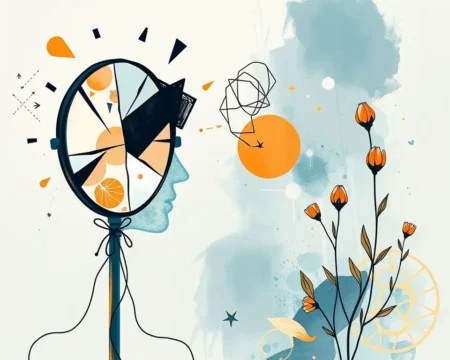Have you ever been so engrossed in an activity that time seemed to vanish? You were completely focused, energized, and maybe even felt a sense of euphoria. This is the flow state, a mental state of complete immersion in an activity. Positive psychologists consider flow to be an essential component of productivity and beneficial for psychological well-being. Achieving it can lead to increased happiness, motivation, creativity, and emotional regulation. Here are five accessible ways to integrate the power of flow into your daily life and unlock your full potential.
What Exactly is a Flow State?
The term “flow state” describes a mental state in which a person is completely focused on a single task or activity. It’s often described as being “in the zone.” During this state, attention is laser-focused on the task at hand, minimizing self-consciousness or worries about performance. Mihály Csíkszentmihályi, a pioneer in positive psychology, popularized the concept. Csíkszentmihályi described flow as a state of complete immersion in an activity, where individuals experience a sense of energized focus, full involvement, and enjoyment in the process.
When you’re in flow, the mind’s usual distractions fade away, placing you in a non-distracted zone. Feelings such as inhibition, hunger, fatigue, or aches and pains melt away, and all that matters is your dedication to your craft.
The Benefits of Finding Your Flow
Entering a flow state offers a multitude of benefits that extend beyond the immediate experience:
- Increased Productivity: Flow enhances concentration and creativity, allowing you to complete tasks faster and more efficiently.
- Improved Focus: When in flow, distractions melt away, enabling deep and sustained focus.
- Enhanced Enjoyment: Activities become more intrinsically rewarding, boosting overall happiness and well-being.
- Reduced Stress and Anxiety: Immersion in a task can decrease stress and anxiety levels, promoting a sense of calm.
- Skill Development: Flow encourages persistence and practice, leading to improved skills and competence.
- Lasting Happiness: The type of happiness one can gain from being in a flow state goes beyond a temporary high — it is a general sense of well-being and a lasting sense of happiness and fulfillment.
5 Proven Methods to Achieve a Flow State
While flow states can sometimes occur spontaneously, you can proactively cultivate the conditions that make them more likely. Here are five strategies to help you tap into this powerful state of mind:
1. Choose Activities You Genuinely Enjoy
The cornerstone of flow is intrinsic motivation. When you’re passionate about what you’re doing, you’re naturally more engaged and willing to invest your full attention.
- Identify Your Passions: Reflect on activities that bring you joy and make you lose track of time. These could be hobbies, creative pursuits, work-related tasks, or anything that sparks your interest.
- Align Tasks with Interests: Look for ways to incorporate your passions into your daily routine. Can you find a creative angle to a mundane task? Can you dedicate time each day to a hobby you love?
- Set Clear Goals: Establish specific, achievable goals for your chosen activity. Knowing what you want to accomplish provides direction and enhances focus.
For example, if you enjoy writing, set a goal to write for 30 minutes each day on a topic that excites you. If you love cooking, try experimenting with a new recipe each week.
2. Find the Sweet Spot: Challenge vs. Skill
Flow thrives when there’s a balance between the challenge of the task and your skill level. If the task is too easy, you’ll become bored; if it’s too difficult, you’ll feel frustrated.
- Assess Your Skill Level: Honestly evaluate your abilities in the chosen activity.
- Adjust the Difficulty: Gradually increase the challenge as your skills improve. Look for tasks that stretch your abilities without overwhelming you.
- Seek Optimal Challenge: Aim for activities that require you to push yourself slightly beyond your comfort zone. This keeps you engaged and promotes growth.
Think of learning a musical instrument. Start with basic chords and simple songs, then gradually progress to more complex pieces as your skills develop. The key is to constantly challenge yourself without getting discouraged.
3. Minimize Distractions and Create a Focused Environment
Distractions are the enemy of flow. To fully immerse yourself in an activity, you need to create a space that minimizes interruptions and promotes concentration.
- Identify Distractions: Determine what typically disrupts your focus, whether it’s social media, emails, noise, or other people.
- Eliminate Interruptions: Turn off notifications, silence your phone, close unnecessary tabs on your computer, and let others know you need uninterrupted time.
- Create a Dedicated Workspace: Designate a specific area for focused work or activities. This could be a quiet room, a corner of your home, or even a specific time of day when you’re less likely to be disturbed.
- Use Noise-Canceling Headphones: Wearing noise-canceling headphones can help you block out external sounds and create a more immersive environment.
4. Practice Mindfulness and Focus on the Present Moment
Mindfulness, the practice of paying attention to the present moment without judgment, is a powerful tool for cultivating flow. By focusing on the “now,” you can quiet your inner critic and fully engage with the task at hand.
- Start with Meditation: Even a few minutes of daily meditation can improve your ability to focus and be present.
- Engage Your Senses: Pay attention to the sights, sounds, smells, tastes, and textures of your current activity.
- Let Go of Self-Judgment: Avoid criticizing your performance or comparing yourself to others. Focus on the process, not the outcome.
- Use a Pre-Flow Ritual: Establishing a pre-flow ritual can signal to your brain that it’s time to focus. This could involve deep breathing exercises, stretching, or listening to specific music.
5. Embrace the Process and Celebrate Small Wins
Flow is about the journey, not just the destination. Focus on the intrinsic rewards of the activity itself, rather than solely on achieving a specific outcome.
- Enjoy the Learning Process: View challenges as opportunities for growth and development.
- Break Down Tasks: Divide larger goals into smaller, manageable steps.
- Celebrate Milestones: Acknowledge and celebrate your progress, no matter how small. This reinforces positive feelings and motivates you to continue.
- Don’t Fear Failure: See setbacks as learning experiences and opportunities to improve.
- Stay Persistent: Some evidence suggests that being in flow can offset the frustration of a difficult task, allowing people to keep going.
Reaching New Heights
The flow state is a powerful tool for enhancing productivity, creativity, and overall well-being. By incorporating these five strategies into your daily life, you can unlock your potential and experience the joy of being fully immersed in the present moment. So, find your passions, challenge yourself, eliminate distractions, practice mindfulness, and embrace the process. The world of flow awaits!










